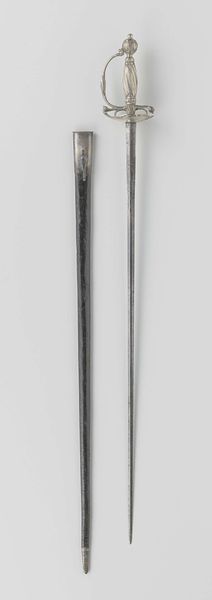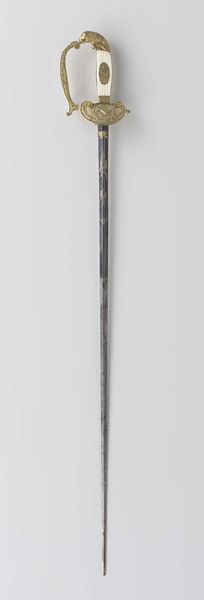
Souvenir spoon with finial in form of William Shakespeare's house in Stratford-on-Avon 1885 - 1899
0:00
0:00
silver, metal, sculpture
#
silver
#
metal
#
sculpture
#
sculpture
#
decorative-art
Dimensions: L. 4 5/8 in. (11.7 cm.)
Copyright: Public Domain
Editor: So, this is a souvenir spoon, made of silver, sometime between 1885 and 1899 by Saunders & Shepherd. It has a tiny replica of William Shakespeare's house on the handle. I'm struck by how mass culture and "high art" kind of collide here. What do you make of that? Curator: Precisely! It's a fascinating object because it's both a functional item and a symbol of cultural value. How do you see the production and consumption of this spoon playing into Victorian society's understanding of art and labor? Editor: Well, I suppose the spoon suggests a desire to own or consume a piece of culture, making art accessible to a wider audience through mass production. Is it a way of democratizing art, or cheapening it? Curator: An interesting question! Consider the labour involved in its making, as well as the materials used. Silver, although less expensive than gold, implies value, but its presence in a "souvenir" object creates a tension between status and disposability. Is the spoon trying to elevate the everyday, or diminish the significance of Shakespeare's legacy through commercial reproduction? Editor: So it's not *really* about Shakespeare's house, but about *having* something connected to the idea of Shakespeare and culture? It sounds almost cynical. Curator: Precisely. Think about the factories, the workers crafting each piece of silver… this isn't the artist-as-genius, creating unique works. It's about manufactured experience, feeding a growing middle class keen on acquiring both objects and status. Editor: I never thought a spoon could tell you so much. I see the relationship between mass production, class aspiration, and cultural icons in a totally different way now. Thanks! Curator: My pleasure! Always good to consider how things are made, who makes them, and why they're made! It provides an insightful understanding of social values.
Comments
No comments
Be the first to comment and join the conversation on the ultimate creative platform.













